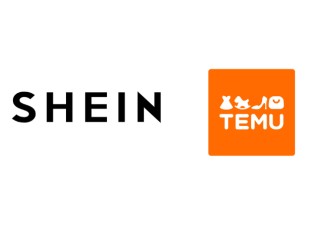In Scenario 3, if the examiner believes that both cited marks are similar enough to the reviewed trademark on similar goods, while the applicant takes action against one of them which is being processed, the status of another cited mark is unchallenged, there is no need to suspend to wait for the outcome of the pending action against the orange one.
Scenario 4 differs from the previous ones in that a trademark is rejected not only because of a prior conflict mark but also because the trademark itself may contain elements related to absolute grounds for refusal, such as lack of distinctiveness (Article 11 of the Trademark Law of P.R.C.), deceptive (Article 10.1.7), or misleading indications (Article 10.1.8), etc.. If the examiner believes that the grounds related to the absolute reasons are established and are sufficient to refuse the mark, there is no need to suspend to wait for the outcome of the cancellation of the cited mark.
Specific circumstances
The new rules stipulate the following circumstances where the CNIPA should suspend or may suspend the examination:
Seven “should” circumstances:
1) The disputed mark or the cited mark is in the examination of name change or transfer of ownership, and no right conflicts would exist after the modification or assignment;
Interpretation: If one party’s (or both parties’) trademark is undergoing a name change or transfer of ownership, and the conflict can be resolved after the change or transfer, suspension should be applied.
Key word: [transfer]
2) The cited mark has expired and is in the procedure of renewal or falling in the grace period;
Interpretation: Where the examiner finds that the earlier mark in a review case has already expired, but the application for renewal has been filed, or the mark is still in the grace period of renewal, the examiner should suspend and wait for the status of the earlier trademark to be determined.
Key word: [renewal]
3) The cited mark is in the examination of withdrawal or removal procedure;
Interpretation: If one party withdraws or removes the trademark, the conflict will be eliminated, and the examiner will wait for this result to be determined.
Key word: [withdrawal]
4) The cited mark has been canceled, invalidated or expired due to non-renewal, but within one year (not including circumstances where the refusal reason does not involve Article 50 or the cited mark is canceled due to nonuse);
Interpretation: This situation is based on Article 50 of the trademark law, which stipulates that within one year after the cancellation, invalidation, or non-renewal of a registered trademark, no other party should be approved to register a trademark that is identical or similar to the invalid trademark on the same/similar goods, to avoid possible confusion in the market in the short term caused by the influence of the prior trademark. In the review cases, if the trademark of one party involves the 1-year period, the case should be suspended until the period ends.
Key word: [1-year period]
5) The case involving the cited mark has been concluded and is waiting for the decision to take effect, or the execution of the effective court judgment to be re-examined.
Interpretation: For instance, where a decision has been made to cancel a cited mark based on non-use but the decision has not yet become effective, the review on refusal should be suspended, until the cancellation decision to take effect. This is a significant change compared to the past, where the applicant had to exhaust the following–up procedures to buy more time for the decision to take effect.
Key word: [pending ruling]
*The above circumstances 1-5 are generally applicable to the procedures including review on refusal, review on opposition, and invalidation.
6) The prior right involved shall depend on the conclusion of another pending case being examined by the court or administration (in conformity with Article 35.4 and Article 45.3 of the Trademark Law of P.R.C.).
*Circumstance 6 is specifically applicable to the procedures of review on opposition and invalidation.
Interpretation: Once the prior trademark basis is attacked and pending in another case (e.g. a non-use cancellation), the review on opposition or invalidation should be suspended and wait for the status of the prior trademark right to be determined. In the past, in practice the examiners may or may not suspend. This is another significant change of practice compared to the past.
Key word: [pending case]
7) The legal status of the involved cited mark shall depend on the conclusion of another pending case being examined by the People’s Court or administration, and the applicant has explicitly requested for suspension;
*Circumstance 7) is specifically applied to the procedures of review on refusal.
Interpretation: This is a change that received the most attention because in the past, many reviews of refusal cases failed to wait for the outcome of actions involving cited trademarks and as a result, the applicants had to re-file backup applications repeatedly meanwhile had to file the lawsuit in order to preserve the earlier filing date, thus caused a significant waste of resources. The said “another case” mentioned in this provision shall obviously include non-use cancellation, opposition, and invalidation cases filed against the cited trademark.
Key word: [pending case + request]
Three “may” circumstances:
8) Where the cited mark in a review on refusal has been challenged through an invalidation action, and the cited owner has been determined having bad faith in other concluded cases where Articles 4, 19.4 or 44.1 are established, the review on refusal may be suspended.
Interpretation: In this situation, the examiner may expect that the cited mark is likely to be invalidated due to bad faith, and thus may suspend the review on refusal and wait for the conclusion of the invalidation. The difference between scenario 8 and scenario 7 is that even if the applicant does not explicitly request suspension, the examiner may still decide to suspend. The provision is stipulated as a support measure to combat bad faith registrations.
Key word: [BFR article]
9) Where a case shall refer to or wait for the conclusion of another case with same/similar circumstances, the examiners may decide to suspend (not necessarily requested by the applicant);
Interpretation: This scenario is generally applicable. This situation may or may not involve a cited trademark, while the examiner may suspend to consider the conclusion of the previous case, such as conclusion on trademark similarity, or even on absolute reasons. This provision aims to achieve a higher degree of consistent judgments and unified standards of examination.
Key word: [precedent article]
10) Other circumstances wherein suspension is necessary;
Below is an overview for easy check:












